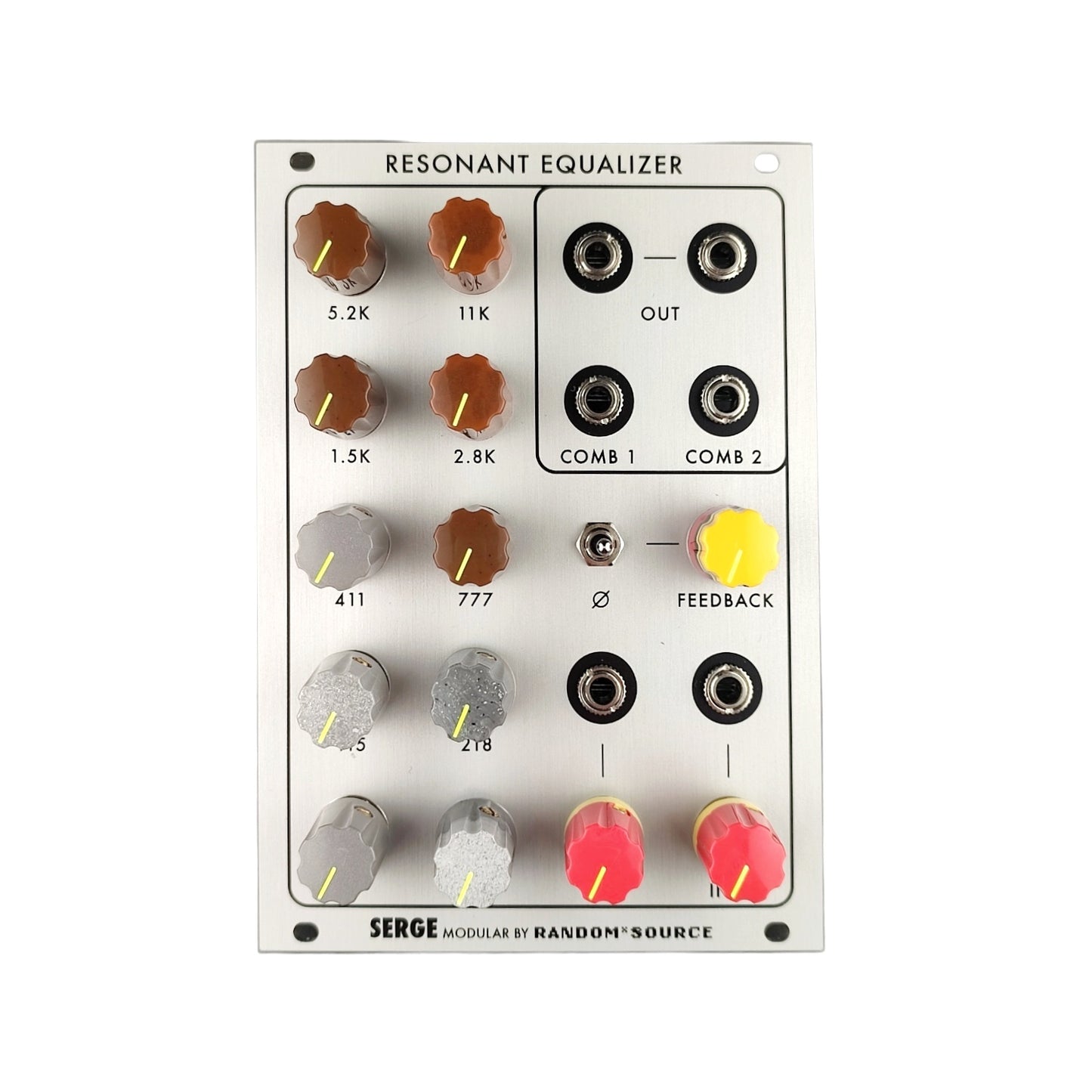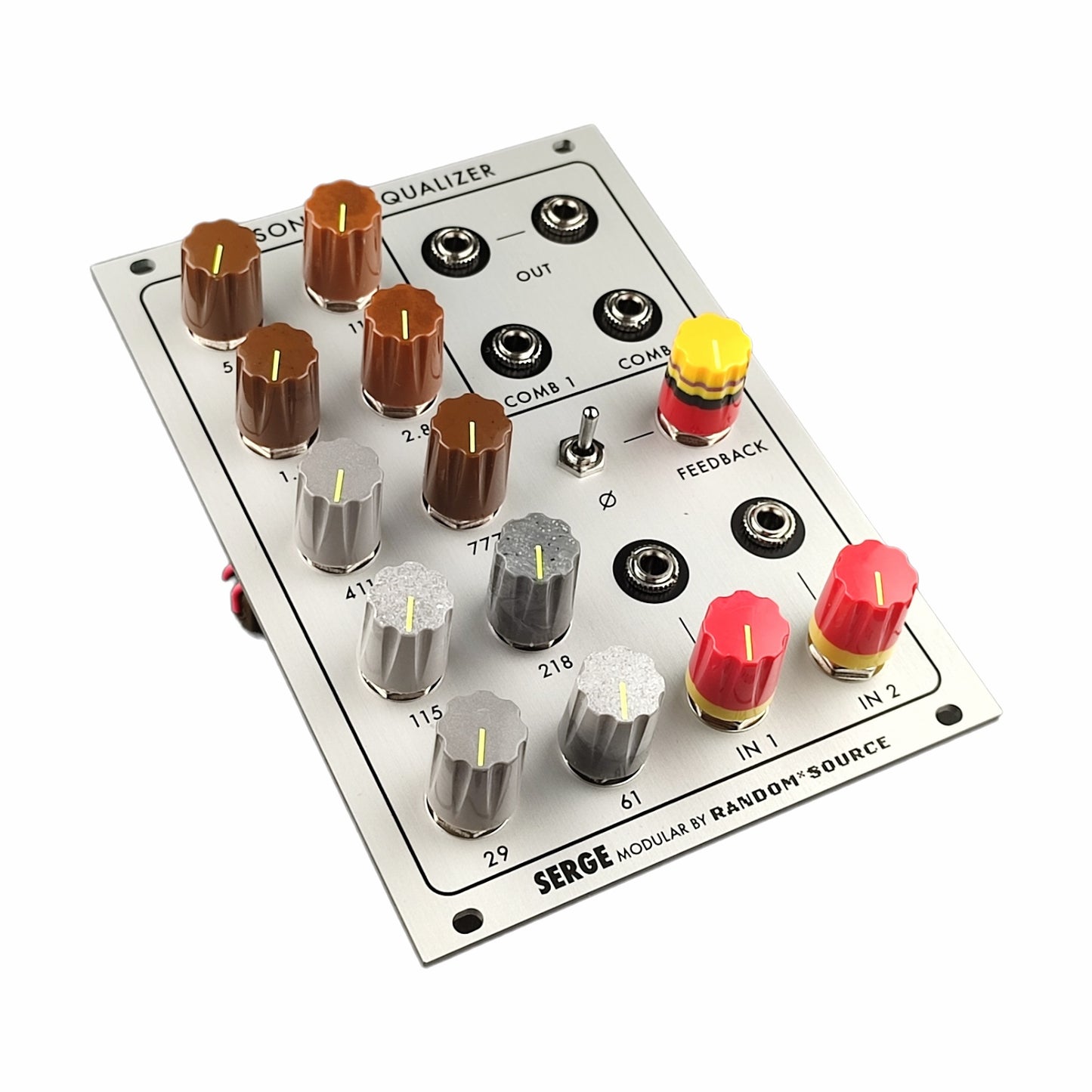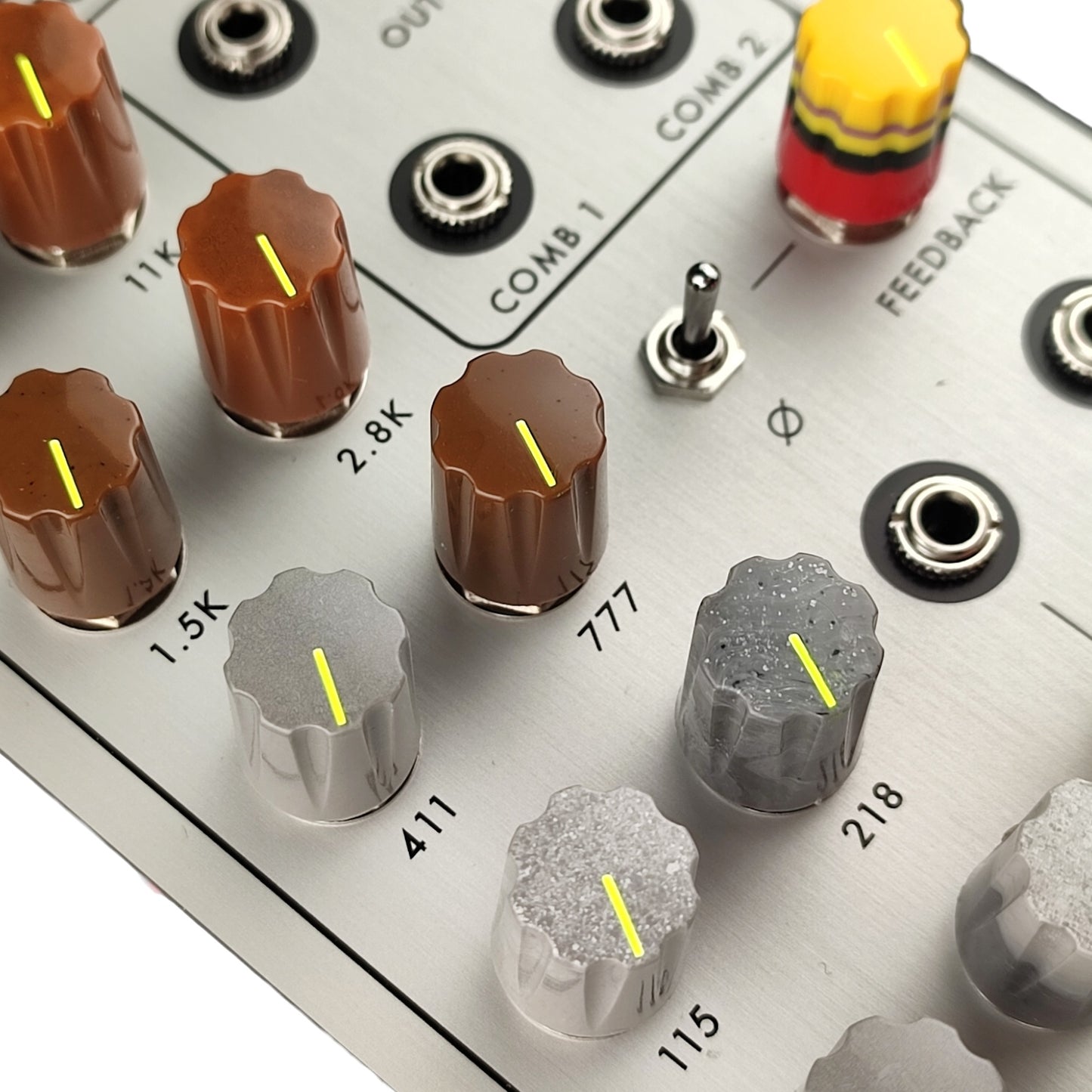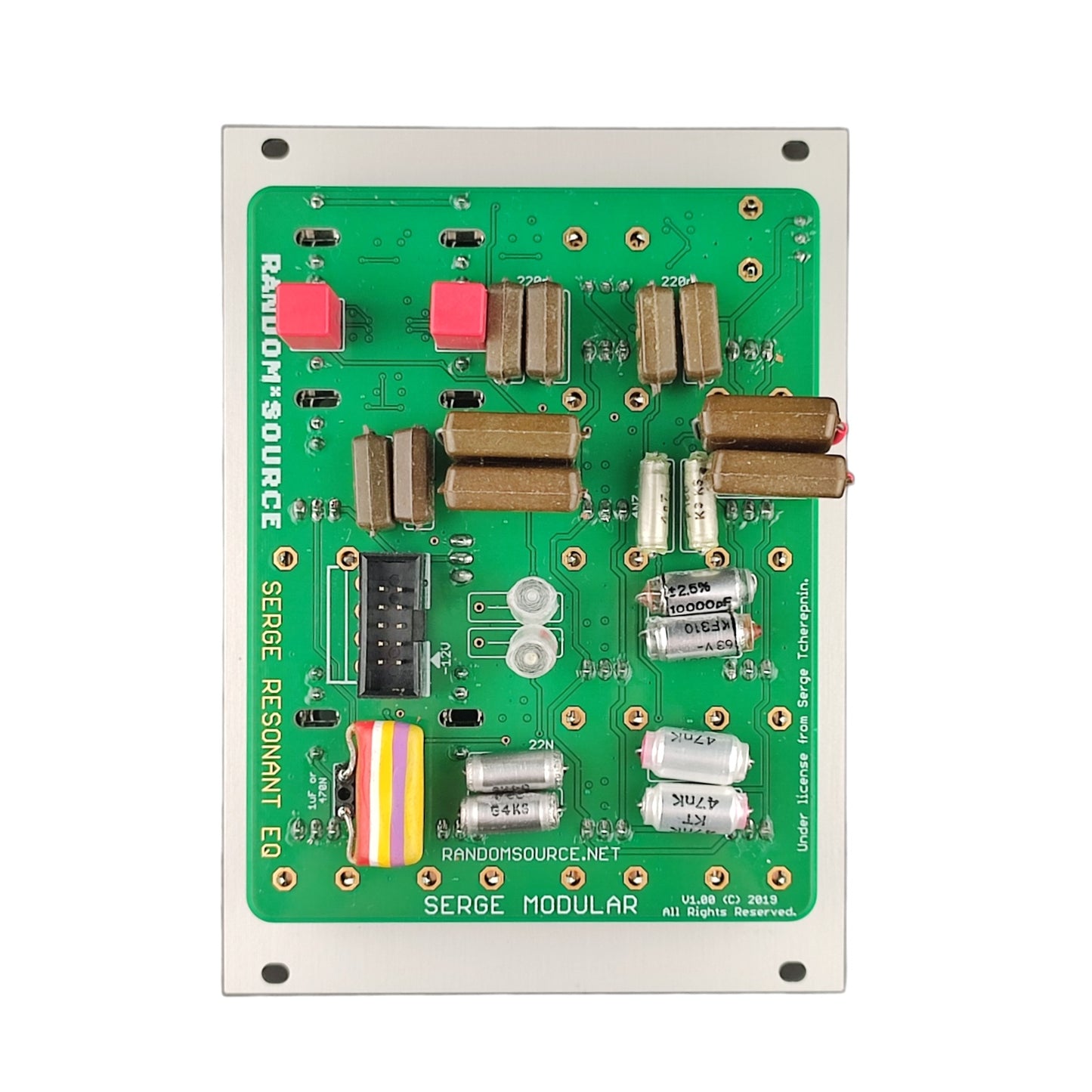Random*Source
Resonant Equalizer (RESEQ) Vintage Styroflex Mica
Resonant Equalizer (RESEQ) Vintage Styroflex Mica
Couldn't load pickup availability
Serge Resonant Equalizer (EQ)
Special Edition / NOS Styro now with knob knobs
In stock, shipping immediately
--- Vintage New Old Stock Closely Matched Styroflex Capacitors with Vintage Mica capacitors
super smooth silky warm and vocaly
The RESONANT EQUALIZER (EQ) is a unique ten-band filter designed specifically for electronic sound synthesis and processing. Except for the top and bottom frequency bands, the bands are spaced at an interval of a major seventh. The Resonant Equalizer is designed to produce formant peaks and valleys similar to those in acoustic insstruments.
There are three equalized outputs: the two COMB outputs provide the sums of the two alternate filter bands, while the two top outputs are the (identical) mix of all filter bands. Please note that there is no sharp separation between the bands, moving any frequency knob will have an influence on both COMB outputs. This equalizer is special in that the bands can be set to be resonant: when the knobs are in the middle position, the response at the main EQ Output is flat. When the knobs are positioned between the 9 and 3 o’clock position, up to 12 db of boost or cut is set at the band. If the knob is set beyond the 3 o’clock position, the band will become resonant, simulating the natural resonance of acoustic instrument formant structures. Below the 9 o’clock position, increased band rejection is achieved.
The Random*Source version of the filter is a licensed and authorized adaption of the legendary Serge equalizer for Eurorack. It adds an input mixer with 2 inputs that can be built/used to attenuate or amplify/distort the input signal(s) before they are sent into the EQ and a Feedback section (knob and phase switch) which allows to feed back the output signal or the inverted output signal (depending on the Phase switch). Adding inverted feedback leads to phase cancellation effects - unlike the “normal” feedback, level decreases and the signal thins out.








